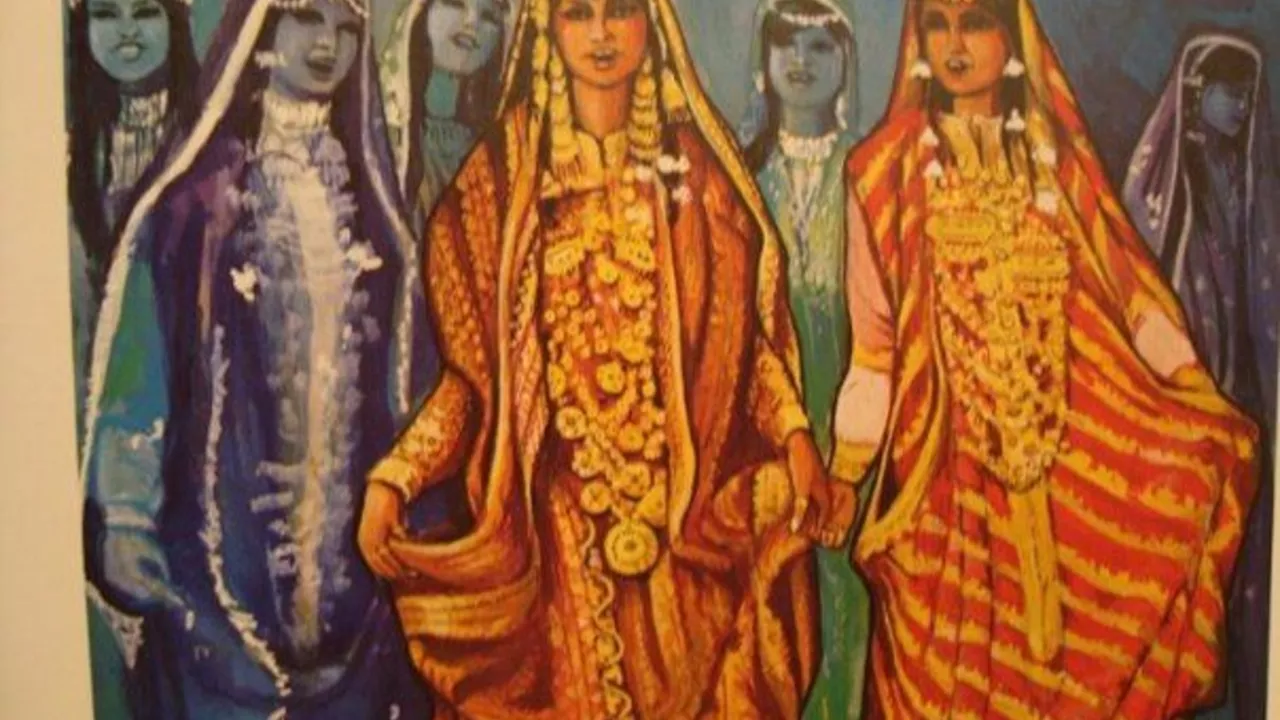Understanding Arab Cultural Clothing
Okay, when we talk about Arab cultural clothes, what comes to mind? Yes! If you're imagining flowing robes, headscarves, and full-body coverings, then Zayn says to you, my friend, you're on the right track. Nonetheless, there's so much more to it than just these garments. Arab clothing has a rich heritage, both in its craftsmanship and the symbolism imbued within its threads, and trust me, it's far more than what meets the eye.
In the past, these ensembles were crafted to protect the wearer from the harsh climatic conditions prevalent in the Arab lands. Over time, they've evolved into unique identifiers of region, sect, and status. These garments tell stories of art, trade, geography, and even politico-religious leanings. So buckle up, fellow fashion enthusiasts, as Zayn takes you on a tour through the magnificent Arab wardrobe – colourful, vibrant, painstakingly detailed, and drenched in tradition.
Diving Into the Layers: The Outer Clothing
Let's kick things off with the most visible component of Arab clothing – the outer layer. Predominantly, the outer garment for men is the 'dishdasha' or 'thobe'. A long white robe that’s perfect for the hot desert climate, offering great comfort and allowing air circulation. Did you know that the whiteness of the thobe can be a status symbol in some Arabian cultures? The whiter the thobe, the wealthier the man! Now that's some white magic, isn't it?
The 'abdah' or 'abaya', typically a black cloak, is the counterpart for women. This timeless piece has evolved into an emblem of Arabian fashion, boasting intricate embroidery, colourful beads, and crystals. The abaya envelops the wearer's body, gliding smoothly over the inner garments and offering a modest, elegant silhouette. It's interesting to note that the abaya's design varies from country to country, each with its unique flair and charm.
Unveiling the Veils: Hijabs, Niqabs, and Burqas
Moving on, let's unwrap the enchanting world of veils – a fascinating aspect of Arab women's attire. The most common of veils are the 'hijab', 'niqab', and 'burqa'. The hijab, which simply means 'cover' in Arabic, is a headscarf that leaves the face visible. The niqab is a veil that covers the face, leaving just the eyes visible, whilst the burqa envelops the entire body, including a mesh screen for the eyes.
Contrary to some misconceptions, the decision to wear a veil is often a personal one, rooted in religious devotion, personal comfort, or cultural practice. For many women, wearing these types of veils serves as an expression of their identity and faith, rather than being seen merely as a cultural obligation.
A Walk Through Footwear Wonder: The Arabian Sandals
Now, let’s set our sights, or rather, our feet, on Arab footwear. The traditional footwear in Arab culture is the humble, yet elegant sandal, known as 'na'al'. Shaped to endure sandy landscapes, these sandals can be simple and practical or glammed up with vibrant colours, gold threads, and even pearls for special occasions.
This type of footwear breathes, is easy to slip off when entering homes or mosques, and matches perfectly with the traditional outfits. Once, during a trip to Oman, I was even gifted a pair of these amazing sandals. And trust me, they are as comfortable as they look. It's like walking on a bed of feathers!
The Man, The Headgear, The 'Agal' and 'Ghutrah'
If you have seen Arabian men with their distinct headgears, you have encountered the 'Agal' and 'Ghutrah'. The Ghutrah, also known as 'Shemagh', is a square cotton piece worn by men. It is typically folded into a triangle and then wrapped around the head for protection against the unforgiving desert sun and sand.
The Agal, on the other hand, is a thick, doubled black cord worn on top of the ghutrah to hold it in place. Though once used by Bedouin tribes to tether their camels, the agal has now evolved into an elegant statement piece. Isn't it amazing how practicality can turn into a fashion statement over time?
The Hidden Depths: Inner Garments
Veering our fashion spotlight onto the less visible but no less critical aspect of Arab clothing, let's talk inner garments. Beneath the thobe or abaya, both men and women don a simple, ankle-length cotton robe known as 'sirwal' or 'kandora'. This garment is loose-fitting, breathable, and tailored to deal with the region's high temperatures.
A personal memory from my childhood is my grandmother hand-sewing these kandoras for the entire family during the holy month of Ramadan. Her nimble fingers flew tirelessly across the fabric, stitching love and warmth into every thread.
Of Precious Stitchwork and Embroideries
Arab clothing is not just about utility, it's also about artistry. The traditional garments often boast beautifully intricate stitchwork and embroidery. Dating back centuries, this golden craft was a labor of love, with each design symbolizing a certain tribe, region, or story.
The 'talli' embroidery, a witness to the great artistic talents found in Arab women, often adorns wedding attire and other special outfits. Yes, you guessed it right; Zayn got to wear a talli embroidered dishdasha for his cousin's wedding. Trust me, my friends, I felt like royalty!
Arab Fashion Blending with Global Trends
In conclusion, while deeply rooted in tradition and culture, Arab fashion also has a growing contemporary landscape. Designers from the Arab world are integrating traditional elements into modern ensembles, creating a beautiful blend. Whether it's a trendy hijab style, a designer abaya, or a pair of traditional sandals paired with jeans, the Arab fashion influence is palpable globally.
So, there you have it, an overview of the splendid world of Arab cultural clothes. Unique, diverse, equally steeped in tradition and modernity, and incredibly comfortable – that's Arab clothing for you. So, next time you see an Arab garment, remember the story it silently tells, the culture it proudly represents, and the hands that meticulously crafted it.
